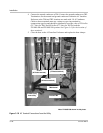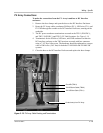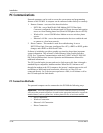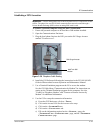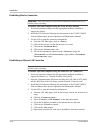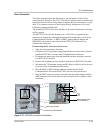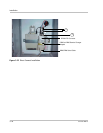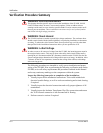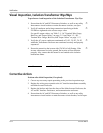
Verification
4–2 152315 Rev C
Verification Procedure Summary
The following procedures are intended to verify correct installation and proper
wiring of the PV100S. Prior to performing the following verification steps on the
PV100S, review all safety requirements and procedures outlined in this manual
and on any cautionary markings on the components within the system.
Inspect the following items prior to completion of the installation:
1. Visually inspect all the mechanical connections. This would include both
electrical conduit fittings, as well as enclosure anchoring and seismic bracing
if required.
2. Visually inspect the electrical connections and verify proper tightness of all
terminations.
3. Visually inspect the Isolation Transformer Wye/Wye connections and ensure
the T6-X0 neutral connection is left disconnected or floating.
4. Perform corrective actions if required.
WARNING: Electrocution Hazard
This chapter describes specific steps to ensure the installation of the PV100S 100 kW
Grid-Tied Photovoltaic Inverter is correct and complete. Failure to adhere to these
warnings could result in severe shock or possible death. Exercise extreme caution at all
times to prevent accidents. These installation instructions are for use by those familiar
and skilled with high voltage procedures.
WARNING: Shock Hazard
The PV100S enclosures contain exposed high-voltage conductors. The enclosure doors
should remain closed with the latches tightened, except during installation, maintenance
or testing. To reduce the risk of electric shock, do not perform any servicing other than
that specified in the installation instructions unless you are qualified to do so.
WARNING: Lethal Voltage
In order to remove all sources of voltage from the PV100S, the incoming power must be
de-energized at the source. This may be done at the utility main circuit breaker and by
opening the AC disconnect and the DC disconnect switches on the PV100S. Review the
system configuration to determine all of the possible sources of energy. In addition, allow
5 minutes for the DC bus capacitors, located on the ceiling of the cabinet, to discharge
after removing power.



